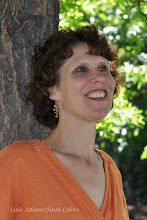An Evening on the Island of the Colorblind
Last night I re-watched The Island of the Colorblind. It follows a neurologist and scientist on a trip to Pingelap, a small island in the South Pacific where almost 10% of the population is born with the eye disease Achromatopsia and 1/3 carry the gene for it. Achromatopsia causes total colorblindness, extreme light sensitivity, and visual acuity around 20/200.
Why would I care about visually impaired men, women, and children living on an island thousands of miles away? I felt drawn to the film because I was born with this disease. Outside the isolated community of Pingelap, Achromatopsia only occurs in about 1-in-33,000 people. It’s recessive so it tends to pop out of nowhere in families, and once it does, parents usually have more than one child with low vision. My sister Sherry has this eye problem while my sister Kristy doesn’t.
After growing up with a disorder so rare that I often find myself explaining it to doctors, the idea of a place where I would have neighbors, friends, and even teachers just like me and wouldn’t stand out as odd fascinates me. What struck me even deeper was their attitude toward the disorder. These visually impaired people get by without the sunglasses, magnifiers, and resources that I rely on, but they also grow up without being labeled disabled. The scientists had to be careful to offer things like sunglasses and magnifiers as cool tools that could make their lives easier without implying that anyone had a problem that needed fixing.
Those who had never seen color didn’t seem to miss it or feel deprived. Instead, they emphasized the patterns, tones, shadows, and textures that they did see. They obviously struggled but it didn’t consume them or hold them back. Many of the night fishermen had Achromatopsia because they see so much better after sunset. The visually impaired seemed perfectly happy and those with 20/20 vision accepted them as normal.
Their outlook got me thinking—wouldn’t it be nice if we could embrace life and others this way? Wouldn’t we all feel a lot freer focusing on what we have instead of what we don’t and noticing strengths before weaknesses? What if we decided to see ourselves and everyone we meet as perfectly normal and treat them accordingly? After all, each of us could turn the television on one day and discover that a place exists where what we thought was weird isn’t considered weird at all.
Why would I care about visually impaired men, women, and children living on an island thousands of miles away? I felt drawn to the film because I was born with this disease. Outside the isolated community of Pingelap, Achromatopsia only occurs in about 1-in-33,000 people. It’s recessive so it tends to pop out of nowhere in families, and once it does, parents usually have more than one child with low vision. My sister Sherry has this eye problem while my sister Kristy doesn’t.
After growing up with a disorder so rare that I often find myself explaining it to doctors, the idea of a place where I would have neighbors, friends, and even teachers just like me and wouldn’t stand out as odd fascinates me. What struck me even deeper was their attitude toward the disorder. These visually impaired people get by without the sunglasses, magnifiers, and resources that I rely on, but they also grow up without being labeled disabled. The scientists had to be careful to offer things like sunglasses and magnifiers as cool tools that could make their lives easier without implying that anyone had a problem that needed fixing.
Those who had never seen color didn’t seem to miss it or feel deprived. Instead, they emphasized the patterns, tones, shadows, and textures that they did see. They obviously struggled but it didn’t consume them or hold them back. Many of the night fishermen had Achromatopsia because they see so much better after sunset. The visually impaired seemed perfectly happy and those with 20/20 vision accepted them as normal.
Their outlook got me thinking—wouldn’t it be nice if we could embrace life and others this way? Wouldn’t we all feel a lot freer focusing on what we have instead of what we don’t and noticing strengths before weaknesses? What if we decided to see ourselves and everyone we meet as perfectly normal and treat them accordingly? After all, each of us could turn the television on one day and discover that a place exists where what we thought was weird isn’t considered weird at all.
Labels: achromatopsia, colorblindness, differences, disabilities, Jeanette Hanscome


2 Comments:
LOVE this, Jeanette!! This is probably a silly comparison, but my poor old beat-up car can't retain hubcaps to save her life, and this morning on my way to work I noticed another car pass me that didn't have any hubcaps... I found myself thinking about how I like seeing other hubcap-less cars because it makes me feel like mine fits in better. =) I love that there's a movie you can relate to in this way, and I'd be interested to see it sometime!
I would love to see that movie too. I contacted the neurologist's office a few years back, after you first told me about the movie, but it is no longer available.
Post a Comment
<< Home